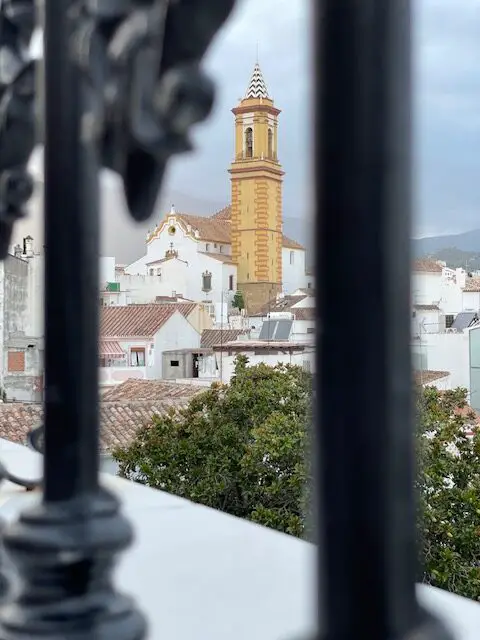If you want to know more about the Casa de las Tejerinas click here.
The Plaza de las Flores captures the essence of life in Estepona.


A fantastic plan to experience the summer night in Estepona
On hot summer nights, the Plaza de las Flores becomes a hive of people, music and conversations in several languages that generates an unforgettable magic.
What was the Plaza de las Flores called before?
The Plaza de las Flores has changed its name several times throughout its history. It was the Plaza de la Constitución, the Plaza del Rey and the Plaza de la cárcel. But that’s not all.

Plaza de las Flores (origins). Photo: PHC Estepona

Plaza de las Flores (1930). Photo: PHC Estepona
In January 1937 the current name, Plaza de la República, was changed to Plaza de José Antonio Primo de Ribera. Similarly, Alcalá Zamora Street became Generalísimo Franco Street. In fact, several streets and squares in Estepona (and in a good part of Spain) had their names changed.

Plaza de las Flores (1962). Photo: PHC Estepona
In April 1979 the first municipal elections were held after the death of the dictator. They were won by the Workers’ Party (PTE) of Maoist ideology. In a plenary session held in November of the same year, a new name change was unanimously approved. The José Antonio sign was removed and it was renamed as it is known today: Plaza de las Flores.
If you have old photographs of the Plaza de las Flores and want to share them, leave a comment in this article and we will contact you. History can only be reconstructed with collective memory. Thank you very much in advance for your cooperation.






